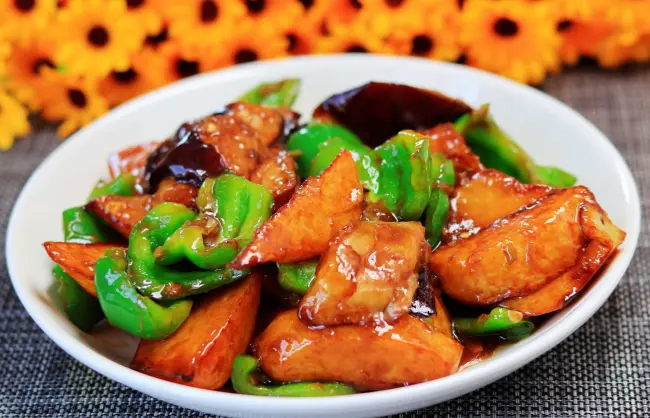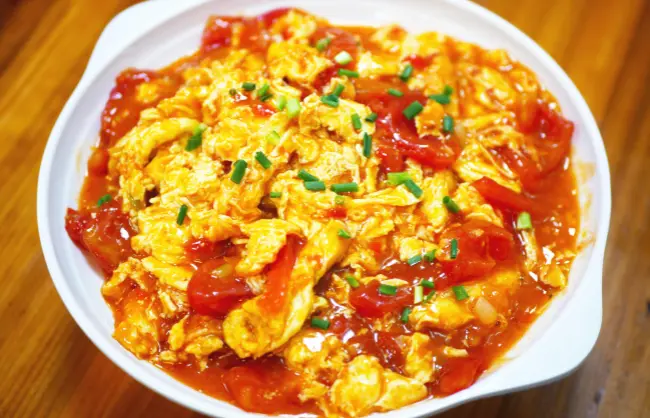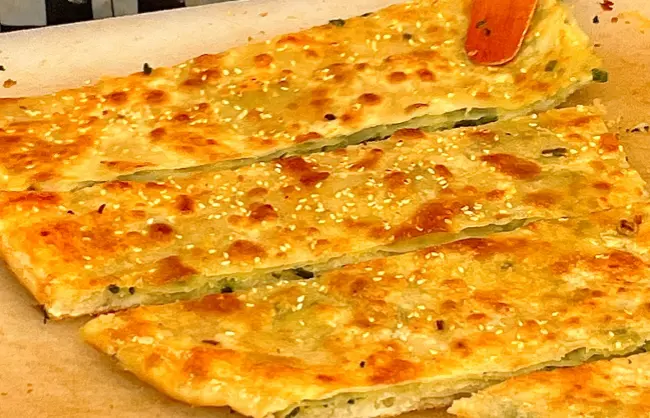Food is fundamental to people’s lives, and “eating” has always been a vital part of Chinese culture. The history and culture of vegetarian Chinese food date back to ancient times, even to the primitive society. They are an integral part of Chinese culture, reflecting its rich history and diverse culinary traditions. With a wide variety vegetarian dish options, China tours offer gourmet foods for vegetarians, whether you are city explorers or food enthusiasts.
History & Culture of Chinese Vegetarian Cuisine
The Development of Chinese Vegetarian Cuisine
Vegetarian Chinese food has a long history in Chinese culinary tradition, dating back to the pre-Qin era. It developed during the Wei, Jin, and Northern and Southern Dynasties, matured in the Song Dynasty, and flourished in the Ming and Qing Dynasties. The strict regulation that Chinese monks must adhere to a vegetarian diet began in the Northern and Southern Dynasties. Emperor Wu of the Liang Dynasty, a devout Buddhist, decreed that monks must follow a vegetarian diet, a practice that has continued to this day.
During the Northern Wei Dynasty, Jia Sixie, in his work Qi Min Yao Shu (Essential Techniques for the Welfare of the People), not only discussed vegetarian Chinese food but also recorded 11 recipes. By the Song Dynasty, vegetarian Chinese food had already reached a considerable scale. The Meng Liang Lu records that there were many shops specializing in vegetarian dishes at the time, and the varieties reached over a hundred.
The Ming and Qing Dynasties marked a new peak in the development of vegetarian Chinese food. The imperial kitchen in the palace established a special vegetarian section, with over 200 dishes prepared. At that time, three major schools of vegetarian cuisine coexisted: court vegetarian cuisine, temple vegetarian cuisine, and market vegetarian cuisine. Court dishes highlighted rare, temple dishes stressed exquisite, and folk dishes emphasized flavor.
Vegetarian Chinese Food Culture
Chinese cooking began to take a primarily vegetarian direction at the dawn of agriculture 9,000 years ago. During the pre-Qin period, meat was consumed by those with social status, and ordinary people were only allowed to eat meat at the age of 70. According to Huangdi Neijing, which categorized food into “grains, fruits, livestock, and vegetables,” three-quarters of this structure were plant-based. After the Han and Jin Dynasties, with the establishment of Taoism and the introduction of Buddhism, vegetarianism further developed and evolved.
In dietary records, vegetarian dishes occupied a significant proportion. Tofu was invented by Liu An, the King of Huainan in the Han Dynasty. Glass noodles and bean sheets first appeared in the Northern Wei Dynasty’s Qi Min Yao Shu. Seitan is said to have been created by Emperor Wu of the Liang Dynasty.
Related reading:Top 10 Chinese Breakfast Foods – What Breakfast to Eat?
Three Major Schools of Chinese Vegetarian Food
Court Vegetarian Cuisine
Court vegetarian cuisine initially developed within the imperial palace, primarily for the enjoyment of emperors, and later spread to the common people. The Qing Dynasty’s imperial kitchen had separate sections for meat, vegetarian, rice, and pastry dishes. The vegetarian section was specifically responsible for preparing vegetarian dishes, characterized by extremely meticulous preparation and complex specifications for side dishes.
Temple Vegetarian Cuisine
Temple vegetarian cuisine refers to the exquisite vegetarian dishes in Buddhist temples and Taoist monasteries, representing the pure vegetarian school of Chinese vegetarian food. The most famous vegetarian dishes in the Qing Dynasty were originated from the Fayuan Temple in Beijing, Dinghui Temple in Zhejiang, Baiyun Temple in Shanghai, and Yanxiao Cave in Hangzhou. It is recorded that the Shaolin Temple once entertained more than 20 emperors, including Emperor Taizong of Tang and Emperor Gaozong of Qing, with Shaolin vegetarian dishes.
Folk Vegetarian Cuisine
Folk vegetarian cuisine refers to vegetarian dishes prepared in folk vegetarian restaurants and homemade vegetarian Chinese food, which also have their own schools, such as Sichuan-style vegetarian dishes.
Related reading:Discover the 15 Most Popular Chinese Dishes You Must Try
Top 10 Vegetarian Dishes
Stir-fried Potato, Green Pepper, and Eggplant (地三鲜)
Di San Xian is a traditional and famous dish from Northeast China. The ingredients consist of three fresh seasonal vegetables from the field: eggplant, potato, and green pepper. To prepare the dish, potatoes and eggplants are first cut into irregular chunks, while green peppers are sliced into small pieces.

Candied Sweet Potatoes (拔丝地瓜)
Ba Si Hong Shu is a traditional Han Chinese dish that is famous for its appealing appearance, aroma, and taste. It belongs to the Shandong cuisine and is known for its sweet flavor. Originating from northern China, this dish features soft and tender sweet potatoes coated with a fragrant, caramelized syrup, creating a delicious contrast between the crispy exterior and the tender interior.
Vegetarian Shark Fin (素烧鱼翅)
Su Shao Yu Chi is a dish primarily made from Huang Hua Cai and mung bean sprouts, crafted to resemble the appearance of shark’s fin. Although it is not commonly found in everyday home cooking, the preparation process is actually quite simple and not troublesome.

Air-fried Tofu (空气炸豆腐)
Air-fried tofu is one of the popular vegetarian Chinese food made using an air fryer. The outer layer of the tofu becomes delightfully crispy, while the inside remains smooth and tender. It is typically served with a well-prepared savory and spicy sauce, enhancing its flavor.
Fried Shredded Green Pepper and Potato (青椒炒土豆)
According to historical records, this vegetarian Chinese dish, made with shredded green pepper and potato, is originated in the Jiangnan region. The preparation of shredded green pepper and potato is simple and easy. Just cut the two ingredients into thin shreds, stir-fry them in oil until they turn slightly yellow, then add an appropriate amount of salt and a small amount of light soy sauce, and continue to stir-fry evenly.
Dry-fried Green Beans (干煸四季豆)
Dry-fried green beans is a very popular home-cooked dish among many popular homemade vegetarian Chinese food. The moisture in the green beans is removed through high-heat quick stir-frying, and then a small amount of ground pork and fragrant chili peppers are added. This dish is extremely appetizing and pairs well with rice.
Fried Egg and Tomato (西红柿炒蛋)
There is a wide variety of healthy vgetarian Chinese food, and one of them is the fried egg and tomato. This dish features the sweet and tangy juices of tomatoes coating the gently scrambled eggs, creating a delightful flavor that can evoke a sense of joy throughout the bod. It is not only easy to prepare but also rich in nutrition, with a delicious taste that appeals to people of all ages.

Scallion Pancakes (葱油饼)
Scallion Pancake, a famous Chinese breakfast, is a type of traditional snack from northern China and belongs to the Min (Fujian) or Lu (Shandong) cuisine. The main ingredients are flour and scallions, and it has a savory, salty flavor. This snack is widely distributed in regions such as Fujian, the Northeast region, and Hebei, and is a common food found on the streets and in night markets.

Buddha’s Delight (罗汉斋)
Originally a Buddhist dish in traditional vegetarian Chinese food, it is named after the concept of the Eighteen “Arhats Gathering Together.” This dish is carefully prepared using eighteen types of fresh and fragrant fruits and vegetables. The resulting dish is colorful, exuding a refreshing aroma and is highly nutritious, making it a top-tier vegetarian dish. Traditional Chinese medicine believes that shiitake mushrooms and enoki mushrooms have the effect of strengthening the spleen and harmonizing the stomach. Meanwhile, bean curd skin and glass noodles, both being soy products, are rich in nutrition.
Mapo Tofu (麻婆豆腐)
Mapo Tofu is one of the representative dishes of Sichuan cuisine in vegetarian Chinese food, epitomizing the numbing and spicy of Sichuan food. The main ingredients include tofu, minced beef, broad bean paste (doubanjiang), and Sichuan peppercorns. The numbing sensation comes from the Sichuan peppercorns, while the spiciness is derived from chili peppers. Mapo Tofu is extremely popular worldwide.
Related reading:Eight Major Chinese Cuisines for the Most Authentic Flavors
Where to Eat the Authentic Vegetarian Chinese Food
Shanghai
Shanghai is China’s culinary capital, boasting a plethora of mouth-watering delicacies. During a Shanghai tour, as you stroll along the bustling streets, you will discover some hidden culinary oases—vegetarian restaurants. In these exquisite dining establishments, the perfect fusion of flavor and health of Chinese vegetarian food takes you on an intoxicating gastronomic adventure.
Beijing
Beijing, with its vast resources and rich culture, is home to traditional Beijing snacks. It is also offers a wide variety of delicious dishes from all over the country, including many good vegetarian Chinese food. When it comes to vegetarian restaurants in Beijing, one can see a diverse range of styles and approaches. There are traditional menus such as imperial-style vegetarian dishes that mimic meat dishes and purely vegetarian meals, as well as new dining concepts like vegetarian buffets and vegetarian hot pots.
The long-standing imperial vegetarian cuisine, the natural temple vegetarian cuisine, and the fashionable folk vegetarian cuisine together form a brilliant panorama of Beijing’s vegetarian culture.
Shenzhen
Shenzhen’s vegetarian cuisine is characterized by innovative fusion and multiculturalism. It not only retains the pure and refreshing taste of traditional vegetarian dishes but also breaks conventions by introducing meat-mimicking techniques and globally inspired dishes. Tibetan tea hot pot bases combined with Yunnan mushrooms offer both health benefits and rich flavors. Dishes crafted from seasonal fruits and vegetables also showcase a range of flavors from simplicity to sophistication.
Hangzhou
Zhejiang’s Hangzhou, a city with a long history, has been known since ancient times as the land of fish and rice and is home to many famous Hangzhou dishes. In this city where the taste preference is light and delicate, Chinese vegetarian food is also diversified. Hangzhou’s vegetarian restaurants are thriving and diverse, offering the best Chinese food for vegetarians, each with its own unique charm. They add a great deal of vitality and momentum to Hangzhou’s reputation as the vegetarian capital of the southeast.
Xi’an
Xi’an is a city with a history of 3,100 years and an ancient capital with a history of 1,200 years. Xi’an is not only renowned for its profound cultural heritage but also famous for the delicious vegetarian Chinese food. There are many restaurants specializing in vegetarian dishes here. The streets and alleys are also filled with vegetarian options of Chinese food, such as steamed rice cake (zenggao) and vegetarian sauce noodles (sù sàozimian), among others.









